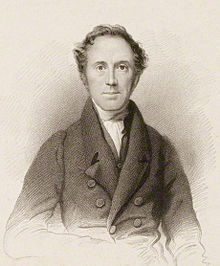
A contemporary of Miller and Hitchcock, old-Earth creationist John Pye Smith published a series of lectures called On the relation between the Holy Scriptures and some parts of Geological Science. It was apparently influential enough to be addressed by young-Earth creationists Whitcomb and Morris a hundred years later. (I read the book, free in the public domain, via Google Books.)
Overall Themes
Biblical Inspiration. Smith opens each lecture with a Bible verse and peppers his discussion with Scriptural references, often relating to praising the “works of God” and opportunities for man to seek them out and gain understanding of them. He clearly interpreted geological time in this context, and insisted on the need for correct interpretation.
Appeal to Authority. While Smith’s lectures included many claims of evidence for his geological positions, he included far more “appeals to authority” of geologists. In a supplemental note he recognizes the weakness of this approach but defends it on the grounds of the difficulty of explaining the evidence to those without geological training, and argues for its validity “on account of the moral and intellectual character of the witnesses, their scientific qualifications, their opportunities for investigation upon the largest scale, their original prepossessions against this conclusion, and finally their number and diversity as to country, party, religious denomination, and other circumstances which are rational guarantees against prejudice.”
Conservation of Miracles. Smith believed in miracles and divine interventions, but he disliked Scriptural or geological interpretations that required inserting ad hoc miracles all over the place.
Human Dignity. Smith would often bestow flowery praise on the motives and intentions of people before ruthlessly criticizing their positions for their ignorance or logical inconsistencies. Yet in the midst of such takedowns, Smith took care to humanize and value the dignity of those he disagreed with, whether “scriptural geologist” (i.e. young-earth creationist of the time) or atheist. He repeatedly expressed hopes for the salvation of the latter, and his disappointments at attitudes and actions that seemed to push them away from the faith.
Contents
Lecture 1. Summary: Geology is complicated and requires a lot of knowledge of many fields to truly understand, but the facts have been carefully and solidly established that the Earth is much older than a few thousand years. This does not contradict a correct interpretation of Scripture, as there is perfect harmony between the word and works of God, but some perceive a conflict, having sincere intentions but poor knowledge of geology, and have tried to argue against the established geological facts but only revealed their own ignorance.
“a vague idea has obtained circulation, that certain geological doctrines are at variance with the Holy Scriptures… I profess my conviction that it is nothing but a semblance, and that, like many other difficulties on all important subjects which have tried the intellect of man, it vanishes before careful and sincere examination.”
“Geology… The facts on which it rests… have… been collected by the assiduous labour of many men of the finest talents ; and those facts have not only been brought together and freely exposed to examination, but they have been subjected to the most jealous scrutiny and the most rigorous tests that can be imagined”
Smith says old-Earth creationists like Hitchcock have been accused by young-Earth creationists like Penn of atheism, but claims they “have had no idea of doing without God, because they suppose the world to have had an earlier origin than” the censurer “admits : for, at whatever period it began to exist, it would alike require infinite power and wisdom to create and arrange it.” Such writers “are sincerely desirous of vindicating Revelation from the attacks of scientific sceptics,” but “Such persons will see that these authors do not understand the subject about which they write ; and they will see a spirit manifested which will not greatly exalt their ideas of the influence of Christianity.”
Lecture 2. Summary: Describes the patterns of geological strata and the fossils found within them, arguing for distinct creations over periods of time
The surface of the earth is not a boring flat plain, but:
“a number of extended masses of various thickness, and spread out one over the other… from the horizontal position which originally but at different times belonged to the larger number, they have been inclined in all degrees… All strata follow antecedent ones in an order which is certain and invariable for every region of the earth… Nowhere, however, is the entire series found. Some member or many are wanting in every assignable locality ; but they are never put in a violated order. … analogy of composition, order of succession, and (which is a most interesting and decisive evidence,) similarity of organic remains, produce a sufficient equivalence ; and when these three kinds of proof concur, we have a complete demonstration.”
“The rocks which lie the lowest in the descending order… are in the state which has been produced by the prodigious heat… The rocks which lie above these… are all composed of… different mixtures of sand, clay, and lime… These have been washed away from the previously elevated rocks… The lower strata… are generally of the greatest extent… The higher and newer are severally of less magnitude in every dimension.
An aside, after discussing the merits of Hutton:
“That any physicists and philosophers are hostile and scornful with regard to Christianity, is deeply to be lamented…but to treat them with injustice is not the way which Jesus Christ would have adopted, and it can tend only to render their prejudices more inveterate.”
On the distribution of animal remains:
“all belong to Classes and Families similar to those which now exist ; but in Genera and Species there are remarkable differences. The earliest are … most widely differing from animals and plants of the existing creation… Each system of strata has species which belong to itself… This fact is among the greatest discoveries of modern times. For it we are indebted to… Dr. William Smith… Each species has a definite period of existence… One species dies off, and its place is taken by another of the same genus ; till at last, in many cases, the whole genus ceases…”
On different kinds of preservation:
“Strata containing shelly, crustaceous, or coralline remains, generally present appearances” of living and dying “on the muddy or sandy bottoms of the waters… spread in beautiful order over considerable areas” with “the preservation of their slender, delicate, and fragile parts.” “There are other cases, in which the organic remains, be they plants, shells, or bones, exhibit proofs of having been washed away from their native seats… and thus transported into new situations” where “the separated parts have become imbedded in the muddy bottom.”
On the implications of differences for common ancestry:
“in the case of countries widely separated, the plants and animals proper to each region so differ from those of every other, as to impress us with the conviction that they have not been derived from a common ancestry for each species, in any one locality upon the face of the earth. They are respectively adapted… These conditions cannot be transferred to other situations. The habitation proper to one description of vegetable or animal families would be intolerable, and speedily fatal, to others…. Hence it follows that there must have been separate original creations, perhaps at different and respectively distant epochs. Man, whom the Creator formed to ” have dominion over the works of his hands,”… was brought into being in one pair ; from which all the varieties of our kind have descended” – not from “separate primary ancestors.”
Lecture 3. Summary: Sets up the “particular details” of how his lectures appear to be “at variance” with “certain sentiments or interpretations of “the Holy Scriptures,” and with his assurance that he will later provide explanations. Lists “opinions” regarding creation in six days, the sun on the fourth day, the initial placement of all land-animals in one region, and the lack of pain and death before the sin of the first human beings.
“It is not the word of God, but the expositions and deductions of men, from which I am compelled to dissent.”
Notes some “commentators” have supposed “as the mediate cause of the longevity of the antediluvian patriarchs, a peculiarly salubrious quality in the atmosphere, which they also suppose to have been destroyed by the deluge, or in consequence of it. But this is an imaginary hypothesis, involving heavier difficulties than what it professes to remove…” since “geological evidence” points to past periods as having been “the reverse of salubrious” to the men and animals “now exist.”
Against the gap theory:
“there is no break in the vast chain of organic development, till we reach the existing order of things… the systems of life have been varied from time to time, to suit the altered condition of the planet, but never extinguished.”
Against the “interpretation” that “the sun and all the other heavenly bodies were created on the fourth day after the creation of the earth.”:
“the spheroidal figure of the earth, its position in the planetary system, its rotation producing the nights and days… the existence of water, and that of an atmosphere, both definitely mentioned, and the creation of vegetables on the third day, — necessarily imply the presence and the operations of the sun : unless we resort to some gratuitous supposition of multiplied miracles, of the most astounding magnitude.”
Describes his belief in miracles, yet thinks that the “wise and gracious design” of the universe is “weakened… by those who plead for an exuberance of miracles…
our ” God is the Rock,” eternal and unchangeable in his attributes ; ” his work is perfect.” He has constructed a system“ which does not “need the interposition of correcting and repairing,” except as regards “the condition of created beings, weak, changeable…”
Lecture 4. Summary: Discusses the apparent “discrepancy” of “the Deluge.” Notes the universality of ancient flood traditions but, like Miller, notes that this does not prove the “geographical universality of the deluge itself.” Criticizes the Deluge as an explanation for every geological feature, rather than a “diversity of effects” implying “a diversity of causes”. Also criticizes those who make the Flood too small, viewing the truth “between these extremes.” Describes Buckland’s view that the “present surface of the Earth” (but not the layers below it) display “the effect of the diluvial waters”.
In what situations soever the remains of animal and vegetable beings were found, it was at once assumed that they were antediluvian relics, brought thither by the flood. It seems never to have entered into men’s minds, to consider the condition of these organic remains, their place in natural history, their relations to each other and the presence or absence of marks of transport… The scooping out of valleys, whether with the most abrupt sides and tortuous courses, or in smooth and gentle undulations of outline, found forthwith a ready explanation ; without any exercise of mind upon the inquiry whether such a diversity of effects does not imply a proportionate diversity of causes in nature, intensity and duration.
The flood must have caused “considerable action,” but “that they should have produced the stratifications of the earth, is a notion which must appear impossible to anyone who has a tolerably correct idea of what those stratifications really are.”
Lecture 5. Summary: Geologists accepted that the Deluge did not produce the “secondary” geologic layers but for a time argued for a universal flood causing the “drift” on the surface. Smith argues that current knowledge shows the global diversity of this drift cannot be explained by a single deluge. He also argues for other problems with a global interpretation, while hinting at a forthcoming Scriptural argument that Noah’s deluge only required enough water to destroy the human race of the time.
“That a transient deluge, like that described in the scriptures, could have produced, and brought into its present situation, all the diluvium which is now spread over the surface of this continent, will not (it seems to me) be admitted for a moment by any impartial observer. It has obviously been the result of different agencies and of different epochs”
Quoting Sedgwick on the changing science:
“In retreating where we have advanced too far, there is neither compromise of dignity nor loss of strength… All the noble generalizations of Cuvier, and all the beautiful discoveries of Buckland, as far as they are the results of fair induction, will ever remain unshaken by the progress of discovery… It was indeed a most unwarranted conclusion, when we assumed the contemporaneity of all the superficial gravel on the earth…
Discusses collection of volcanic hills in Europe with complex intersections of lava flows and different materials of strata, with “light substances” of “volcanic products” resting on the hills that would have been “washed away” by a flood. So “Either, then, the eruptions which produced them, took place since the deluge,” with Smith arguing there was not enough time to produce the sequence of events described, “or that deluge did not reach to this part of the earth.”
One of Smith’s most provocative claims, regarding the arrival, preservation, and dispersal of all species from every continent and island, that it would require “miracles more stupendous than any that are recorded in Scripture, even what appear appalling in comparison. The great decisive miracle of Christianity, the Resurrection of the Lord Jesus, — sinks down before it.”
Lecture 6. Summary: Rejects idea of altering interpretation of Genesis to fit science, and rejects idea that the language is poetic or that the days can be expanded to fit long ages. But he argues that the first verse is an “independent proposition,” not necessarily connecting the six days to the beginning. He criticizes numerous young-Earth “scriptural geologists,” lavishing high praise upon their intentions and character before ruthlessly criticizing their positions, accusing them of logical inconsistencies and general ignorance of the science of geology.
Criticizes Henry Cole (“a zealous maintainer of the gospel according to his own conceptions of it,”) for adamant position about Genesis 1:1, for quoting Luther’s opinion as if divine despite Luther’s wrong scientific views of his time, and also for missing the humility of Luther, who said of creation, “with respect to the particular things, there is very much that is involved in difficulty and doubt.”
On the “hypothesis” that God created fossils in the rocks:
“We find the dead parts of animals… the teeth with their sockets… the provisions and modes of nutrition…” to say that “these objects were never the parts of any living creature… Shall we throw such an advantage as this into the hands of the atheist ?”
On the style of the creation account in Genesis:
“notion, that we have here ” the language of figure and poetry,” is palpably erroneous. The whole is in the style of plain narrative, evidently intended to be understood as a simple, straight-forward, unadorned history…”
However, it uses “a mode of expression adapted, by the graciousness of Divine condescension, to the capacity and habits of thought which belong to men in an unpolished state of society.”
This is indeed the very principle which will… be adequate to carry us out of the difficulty, without sacrificing the reality of the things related, or invading the truth and majesty of Divine Inspiration.
Rejects idea that “the Six Days of Creation may be understood of periods of time.” Despite superficial resemblances to geological order, “the scheme fails when it is attempted to be carried into detail.” Besides, it “requires a stretch of hyperbole which would be monstrous.”
On those who regard “the interval from the Creation to the Deluge, as affording a sufficient lapse of time for the deposition of the chief part of the stratified formations,”
they in general have not spent those years of patient application which the case demands in order to have the prerequisites for forming a correct judgment, but they take up an alluring book… From this they select a few statements, which, by their want of previous knowledge, they are exposed to no small risk of failing to understand…. He finds incoherencies, and has no suspicion that they are produced only by the fragmentary character of his own attainments… forms a theory of his own which delightfully harmonizes with his views of the scriptural cosmogony : he favours the world with it : and, in the end, he is surprised and grieved, and perhaps irritated, that the geologists do not adopt his views.”
Other criticisms of scriptural geologists: Says one “commits the great fault of drawing universal inferences from particular facts and occasional circumstances, without any sufficiently comprehensive induction;” Another: “the keeping out of sight other facts which would be adverse to their hypotheses, probably from not being themselves acquainted with those facts”
Quoting an article: “The anti-geologists taunt the geologists with their diversities of opinion, but keep back that no two of themselves agree : whereas the geologists, amidst all their controversies, are unanimous, as to the main points.”
Quotes a writer saying when you argue with a scriptural geologist “upon the known and incontrovertible facts of Geology”
“he cannot deny them ; but… you perceive that his mind has not really grappled with them… He replies ‘ How do we know that it was not a miracle or, ‘ How do we know that things were then as they are now or, ‘ I will believe God rather than man ;’ or, ‘ We know nothing at all about the matter ;’ or something equally vague, and to which of course no reply can be given. But the most common resource is, ‘ The Deluge did it all.’ This reply exhibits either complete ignorance of the facts, or a rejection of the inevitable conclusions which they suggest…”
Lecture 7. Summary: Sketching a Scriptural defense of his positions, Smith argues that the Infinite God condescended to be described in finite, anthropomorphic language that could be understood by man. He refers to older metaphorical interpretations to argue that “references to natural objects” should also be “comported with the knowledge of the age.” Defends a figurative use of “universal terms” to argue that both the six-day creation and the Flood described a limited region of the “earth.” Presents reasons for accepting animal death before the Fall and other related issues, all in the context of an insistence on a true and divinely-inspired Scripture.
Says the Scriptures, “when understood in the sense intended by the Author of inspiration ; possesses the purity of the best refined silver, the infallibility of unmixed truth.” We must seek “the genuine meaning of the divine oracles, without prepossession in favour of some interpretations, or prejudice against others. Our honest question must be, ” What saith the Lord?”
Notes principle of the Old Testament “representing God by the figurative attribution of the human form.” He sees this as “figurative language” that is “bringing down divine things to the grasp of man.” To try to take these literally is to create an unnecessary conflict with “the plain declarations of the sacred word, upon the spirituality, the omniscience, the unchangeableness of the One Living and True God”
Applying similar logic to “natural phenomena,” Smith notes that “the immobility of the earth was strenuously maintained” for a time as “the general belief of all denominations of Christians,” quoting a “John Henr. Heideggen” attacking the Copernican view: “some celebrated philosophers have endeavoured to reconcile it to the Bible, by considerations drawn from the ambiguity and various use of language… But our pious reverence for the Scripture, the word of truth, will not allow us to depart from the strict propriety of the words.”
By contrast, Smith argues that the Scripture’s condescended style is “that which alone would have been intelligible in the early ages of the world ; but it is still the best adapted for universal use.”
Says Genesis 1:1 speaks of a creation “not from preexistent materials… But when that beginning was, when that act was put forth, it was not the design of revelation to inform us.”
Says the “heavens and earth” of Exodus 20:11 only refers to “All that the Israelites could understand” by it, and argues for a “local” interpretation of the creation story as only applying specifically to “the part of our world which God was adapting for the dwelling of man and the animals connected with him.”
Regarding animal death before the Fall, Smith argues that “Be fruitful, and multiply” implies the “departure of precedent individuals.” He argues that “the threatening of death…‘seems very clearly to imply, that the subjects of this law had a knowledge of what death was”. He argues that even if all animals were “herbivorous,” their feeding would “kill by myriads” the insects and minute creatures that live on plants. Also claims “the anatomical structure of the larger part of animal species presents demonstration that they were created to live upon animal food,” although “a few species indeed are omnivorous ; and this circumstance has misled some persons.” Suggests that “predictions of the peace and happiness of the Messiah’s reign… must be understood… as beautiful poetry.” Argues that passages about death in Romans and 1 Corinthians refer only to humans.
On the Deluge, he argues “that universal terms are often used to signify only a very large amount in number or quantity,” example of Joseph’s famine, also “All the cattle of Egypt died,” yet “in subsequent parts of the same chapter, the cattle of the king and people of Egypt are mentioned,” and many other similar examples, notes “Our Lord himself condescended to use the style of the Jews,” describing the queen of Sheba as coming “from the uttermost parts of the earth.” In conclusion: “I humbly think that those terms do not oblige us to understand a literal universality; so that we are exonerated from some otherwise insuperable difficulties in Natural History and Geology.*
Argues against “calculations” for a huge population of humans at the Deluge, due partially to “the effect of moral depravity in diminishing the fecundity of the human species.” Suggests that “an elevation of the bed of the Persian and Indian Seas” could cause a regional Flood. Quotes Bishop Stillingfleet, “who wrote without the least knowledge of geological arguments,” that “The Flood was universal as to mankind : but from thence follows no necessity at all of asserting the universality of it as to the globe of the earth.”
Conclusion on his efforts to reconcile Scripture and Natural History:
“I have not attempted to do this by affirming that the Scriptures teach the sciences ; or that their language can be forced, by any grammatical or critical ingenuity, into a literal accordance with scientific truths : but by adducing abundant evidence to shew that the Author of revelation spoke to mankind in such language as they were accustomed to use, such as they could most readily understand, and such as must ever remain the most affecting and impressive to the human heart.”
Lecture 8. Summary: In closing remarks, Smith encourages his young listeners to study the sciences, and particularly Geology, as part of the Biblical call of “applying the heart to know, and to search, and to seek out wisdom and the reason of things.” He remarks on the need to defend “correct interpretation” of the Bible against atheistic “infidels,” and entreats such scientists and philosophers, who have discovered so much about the earth, to turn their attention to the Infinite God.
“Your penetration into the vastness of space and time, has made you familiar with the sublimest ideas in nature. Those ideas have brought you into a contact, incomparably closer than that of ordinary men, with the eternal and the infinite. Is it then possible, that you do not meditate on eternity and infinity, as subjects in which you have the highest interest?
Smith intreats that
“you would effectually resolve to yield to religion its rightful place in your minds and your hearts : that you would give the just proportion of your studies to the facts and evidences of Christianity, its doctrines and duties, its promises, its invitations, and its faithful warnings. ” Glory to God in the highest ; on earth, peace ; among men, good will ! “
Supplemental Notes. A series of additional remarks, including the theology of animal death before the Fall and geological evidence for long ages.
“A system of nature, according to which organized creatures should not die, would be totally incompatible with the plan which the Creator has been pleased to establish.”
Of carnivorous animals: “Their bones and muscles, their teeth, claws, stomachs, and intestines, demonstrate that they were created to be nourished solely by animal food.”
“what is the just interpretation of Rom. v. 12. ” By one man sin entered into the world, and death by sin.” We reply that it refers to the access and dominion of death over man…” Without sin, “our first parents” would have been “translated” into “a higher condition” without “dying,” but they “forfeited” this “glorious prospect” and “sunk down into the condition of the inferior animals.”
He compares geological stratum to 30 or 40 volumes of books, many of which each have thin layers like pages, and discusses their general organization and characteristics, which “prove that the whole series of deposits has occupied untold ages.”
“Do not suppose that a satisfactory knowledge of Geology can be obtained in a short time, or by skimming over a book or two… Go into the field of actual search and observation”
Note C refers to a Baobab tree claimed to be older than the presumed date of Noah’s flood. Describes Mr. Rhind’s attempt to argue for “annular circles” that are “irregular” or “that some species may produce more than one woody circle in a year.” Smith exclaims, “I must respectfully suppose that Physiological Botany has not been one of the author’s studies.”
Note D responds to “Dr. Young’s Scriptural Geology,” arguing that he cherry-picks examples of flooded fossils to generalize all fossils from the deluge while ignoring fossils with opposite characteristics. “If the worthy author could make so much of his seam of disparted oyster-shells, washed over a small piece of land, what ought he not to have concluded from the case of the opposite character, and covering an area a thousand times more extensive?”
From Note E:
“Can any man imagine that granite was created in its characteristic state, a composition of visibly and palpably distinct materials, scarcely mixed, only put loosely together ? It would be almost as reasonable to affirm that the stomachs of the first animals were created with bitten and masticated fragments of the appropriate food in them.—”…”But this unutterable period ! — Compared with the infinite existence, with the eternity of GOD, it sinks to a moment.”
And a final quote which serves as a fitting conclusion to this summary of Smith’s work:
“This sketch, hasty and imperfect as it is, demonstrates a series of changes in organic nature, adapted to the variations in temperature, atmospheric constitution, and mineral composition, which, upon independent grounds, we have reason to believe did take place. The perfections of the Creator are conspicuous in all this wondrous course of change. We see unity of purpose, harmony of means and adaptations, and infinite variety in modes of development. ” O Lord, how manifold are thy works ! In wisdom hast thou made them all. The earth is full of thy riches : so is this great and wide sea.” (Ps. civ. 24.)

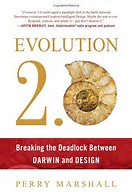 Perry Marshall applies ideas from engineering and information theory to evolutionary biology with a twist that combines intelligent design and evolution. He touts under-appreciated advances in biology that reveal cells to be far cleverer than most people realize, arguing that the cell’s complexity was intelligently designed and that this complexity actually makes evolution possible!
Perry Marshall applies ideas from engineering and information theory to evolutionary biology with a twist that combines intelligent design and evolution. He touts under-appreciated advances in biology that reveal cells to be far cleverer than most people realize, arguing that the cell’s complexity was intelligently designed and that this complexity actually makes evolution possible!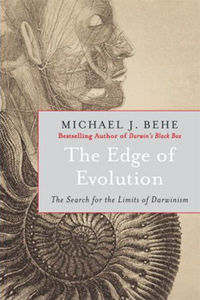 Michael Behe’s Edge of Evolution is a decade-later (2007) follow-up to his 1996 book Darwin’s Black Box, which described the “irreducible complexity” of certain biological structures and argued that Darwinian evolution could not produce them. In this book, Behe looks at the limits of what natural selection and random mutation can do, trying to define what he calls “the edge” of evolution.
Michael Behe’s Edge of Evolution is a decade-later (2007) follow-up to his 1996 book Darwin’s Black Box, which described the “irreducible complexity” of certain biological structures and argued that Darwinian evolution could not produce them. In this book, Behe looks at the limits of what natural selection and random mutation can do, trying to define what he calls “the edge” of evolution. Oxford mathematics professor John Lennox offers his thoughts on the relationship between Genesis and science in the short but insightful book,
Oxford mathematics professor John Lennox offers his thoughts on the relationship between Genesis and science in the short but insightful book,  A geological textbook of sorts by old-Earth creationists Edward Hitchcock, his son Charles Henry Hitchcock, and John Pye Smith. (
A geological textbook of sorts by old-Earth creationists Edward Hitchcock, his son Charles Henry Hitchcock, and John Pye Smith. (





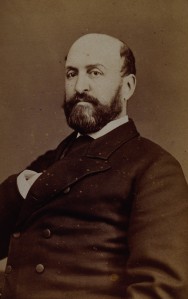
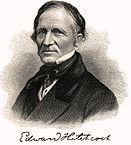 Edward Hitchcock was an old-earth creationist from the 1800’s. A pastor as well as a geological surveyor, Hitchcock’s equal passions for theology and geology were clearly on display in his work
Edward Hitchcock was an old-earth creationist from the 1800’s. A pastor as well as a geological surveyor, Hitchcock’s equal passions for theology and geology were clearly on display in his work